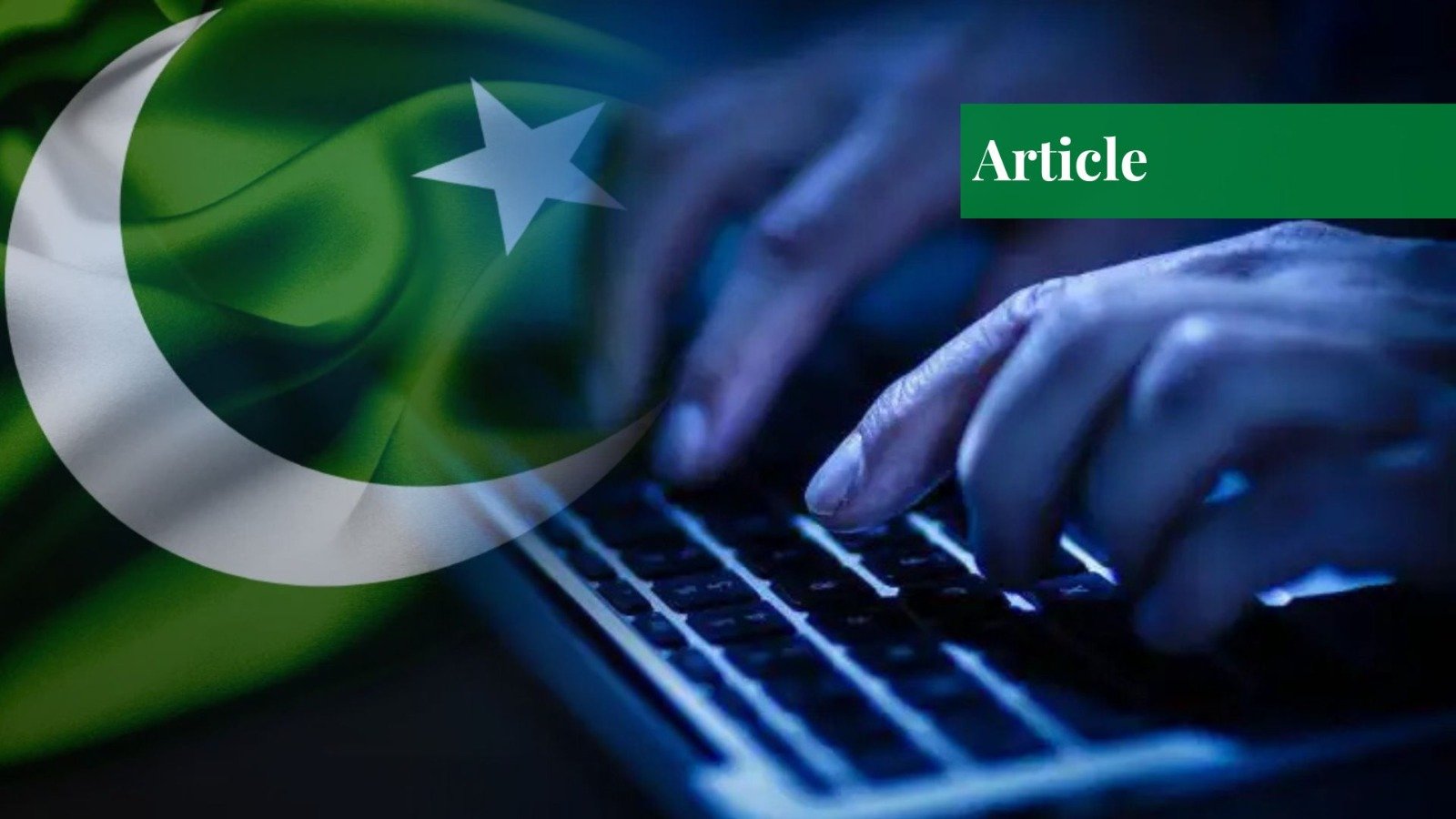Introduction
The concept of security in our modern world is no longer limited to borders, armies, and even weapons. In addition to the traditional security issues, there have also arisen the non-traditional security threats, the threats that attack within societies, threats that erode their moral, social, and institutional bases. The most ignored, but seriously detrimental, is the increasing use and distribution of pornographic content, particularly among the younger generation, in Pakistan. What was once considered little more than a moral or cultural issue has since become an issue with serious national security, social cohesion, and online safety implications.
Not only does pornography, especially the exploitative and synthetic variety of it, warp understanding of relationships and human dignity, but it also exposes young people to the dangers of addiction, psychological damage, and predatory networks existing in cyberspace. In addition to personal effects, it is used as a tool to destabilize institutions. This paper aims to provide enlightenment on pornography as a significant non-traditional security issue in Pakistan. It will examine how the unregulated exposure of young people to explicit content causes gaps that go well beyond individual life, to collective psycho-social health, to social frailties, and to internal divides that expose the nation to further internal fractures.
Youth Exposure to Pornography: An Increasing Digital Contagion
A substantial number of young people in Pakistan have access to pornography using smartphones and social networking platforms, and other encrypted messaging applications. In 2023, a report issued by the Pakistan Telecommunication Authority (PTA) argued that more than 70 percent of internet users in Pakistan are below the age of 30 and that pornography is among the five most popular categories searched in Pakistan on search engines.
The environment has become more prone to digital permeation, which has led to an easy approach to explicit content and even normalized the situation. The lack of comprehensive sex education as well as digital literacy fuels the problem, as youth are more vulnerable to misinformation, exploitation, and addiction.
The psychological consequences of exposure to pornography at a young age are destructive. Constant use of explicit material is linked to aggression, a warped concept of consent, and desensitization to sexual assault in teenagers. The increase in these behavioral changes is part of a larger breakdown of social convention and interpersonal trust, especially in schools and at the workplace.
Pornography and Cybersecurity: The Process of Exploitation
The gendered nature of pornography as a security threat is particularly horrible in the case of Pakistan. Most pornographic sites and even person-to-person sharing networks contain computer viruses, scams, and spyware. Most youth are unable to recognize these dangers and, without their knowledge, risk their devices and personal information to cybercriminals. According to the Federal Investigation Agency (FIA) Cybercrime wing, over 60% of cyber harassment complaints in 2024 involved the misuse of sensitive material, such as sextortion and non-consensual sharing.
The rise of deepfake pornography and AI-generated explicit videos has further complicated Pakistan’s cybersecurity situation. Mostly women, victims are targeted with fabricated content that damages their reputation dramatically and leaves a serious impact on them. Deepfake pornography has, in some cases, also been used as a weapon against journalists, activists, and students, and resulted in silencing and discrediting campaigns. Such cases show how digital pornography is being consumed as a political and social instrument to silence dissidents, control the masses, and smother freedom of expression and democracy, whereby there is a gender imbalance in participating in social life, politics, and the academic arena.
Institutional Weaknesses and Insider Threats
Pornographic content has also seeped into professional and institutional spaces, raising concerns for organizational integrity and even national security. In learning institutions, the exchange of explicit materials among learners and even among teachers has resulted in the practice of disciplinary cases and legal suits. According to stats provided by the Higher Education Commission (HEC), in 2023, the number of complaints connected to the distribution of pornographic material through the university networks and WhatsApp groups increased enormously. Such incidents not only disrupt educational environments but also place institutions under the radar of any legal investigation and social criticism.
The insider threat of consuming pornography has increased in the government and corporate worlds. When working with a prohibited site, employees can also infect the company system with malware, violate ethical and other codes, and present a threat to confidential information. According to the CERT Insider Threat Center, this type of behavior, which may be excused as an individual problem, can turn into an organizational problem when left unattended. In such unstable virtual communications, where cybersecurity protocols are still in their infancy, such insider attacks may pose a literal threat to the data sovereignty of the state and the reputation of the company.
Fragmentation in Society and Gendered Violence
In Pakistan, the gendered element of pornography as a security problem is especially acute. The over-targeting of women involves non-consensual content, revenge porn, and deepfake abuse. This digital violence that restates the patriarchal socio-political principle, silences the female voice, and justifies fear. In a survey by the Digital Rights Foundation (DRF), over 70 percent of the women who have been harassed online in Pakistan have been said to be threatened that their explicit material would be released, whether real or fake.
There is a wider perspective of this gendered violence on society as a whole. It disheartens women’s agencies from taking part in public life, journalism, politics, and academia, where participation suffers from gender imbalance. The loss of female agency is detrimental to human security objectives in Pakistan and to the democratic progress of the country. Above all, the actual cancer, misogynistic elements, are common in brown societies, which gives birth to a culture of impunity in which convent, honor, and accountability are highly ignored. So, if we frame pornography as a non-traditional threat, it will also acquire a feminist lens that throws light on the big picture, and thus, the broader structural changes will occur.
Strategic Implications for National Security
Pornography, as a novel kind of threat to non-traditional security in Pakistan, has special consequences regarding the strategic implications. Pornography poses a serious threat to youth development and institutional integrity. If not addressed on time, it will shred the threads of societal fabric through social disintegration. Also, in line with Barry Buzan’s securitization theory, the features of an issue are perceived as security threats when portrayed as existential threats by powerful actors. In Pakistan, we need to reframe the issue of pornography not as a moral failing but as an existential threat and call into action a united front of the Pakistani people.
Conclusion
As a non-traditional security threat, pornography has become a powerful force, especially digital and deepfake pornography. It is affecting the way young people behave and giving fuel to gendered violence. Thus, the policymakers need to pay attention to this grave issue before things get worse. With the changing aspects of the digital environment, there is a need to equally revise our concept of security—one that emphasizes the dignity of the human person, reform within the system, and integrated governance. Pornography is a strategic threat, not a cultural accusation, and it is a threat that is national in character and necessity. The future of Pakistan itself rests upon how the nation will deal with this difficulty with lucidity, compassion, and courage.
If you want to submit your articles and/or research papers, please visit the Submissions page.
To stay updated with the latest jobs, CSS news, internships, scholarships, and current affairs articles, join our Community Forum!
The views and opinions expressed in this article/paper are the author’s own and do not necessarily reflect the editorial position of Paradigm Shift.
Manahil Tariq Manj is a student of defence and strategic studies at Quaid-i-Azam University, Islamabad. She has previously interned at the Ministry of Defence (MOD) and is currently interning at the Ministry of Foreign Affairs, Islamabad. Her research interests include conventional and hybrid warfare, strategic deterrence, military diplomacy, regional conflict dynamics, and evolving doctrines of modern warfare.



